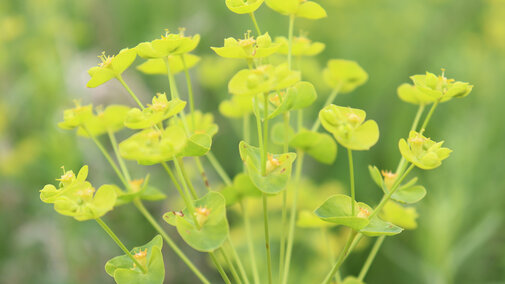Evaluate Forage Status on Memorial Day
Memorial Day is a good time to examine the status of hay and forage programs for the year.
Many hay and forage jobs should be completed, or at least started, by Memorial Day. For example, all perennial grasses or legumes should be planted by now. If you still have planting to do, it would be better to wait until mid-August.
Spraying for musk thistle needs to occur before Memorial Day. Plants that have started to bolt and grow tall usually are not completely killed by spraying. Also, the waxy cuticles or layers on the leaves gets thicker as summer progresses, making herbicide absorption less likely. Digging may be your best option now.
For high quality hay, your alfalfa should have been cut already. Later cutting might give hay that’s good enough for many livestock, but there is little chance of getting dairy quality hay any more this cutting.
The end of May also marks the general time for the start of planting season for summer annual grasses. Soil temperatures of 60 degrees or warmer are best for Sudangrass, forage sorghums, and sorghum-sudangrass hybrids. Millets, though, prefer even warmer soil temperatures.
Memorial Day is a good time to estimate if your pastures will have enough moisture to produce the growth needed by your livestock this year. If drought has caused reduced growth, adjust animal numbers now before it's too late. Summer rains are not likely to allow you to catch up completely. And if growth is abundant, maybe you can cut some for hay instead or stockpile it for winter grazing.
Follow through with this Memorial Day evaluation and many hay and forage problems will be solved, or at least foreseen.
Fertilizing Warm-season Grass Pastures
Fertilizing warm-season grass is a practice some producers do, but one should consider forage needs, the value of the forage and fertilizer costs.
Warm-season grasses are very efficient at using water and nutrients. Where moisture is present, warm-season grasses will grow rapidly when air and soil temperatures increase. With fertilizer, growth will be more abundant resulting in more hay or grazing days. Mid-May to early-June is the window to fertilize.
How much fertilizer to apply depends on each operation. First, consider whether or not fertilizing is worth the cost. If extra growth won’t get grazed or extra hay won’t get fed, then fertilizing won’t be economical.
Knowing what species will be fertilized can also help with the decision. Taller growing warm-season grasses such as switchgrass, big bluestem and Indiangrass will be the most efficient with the fertilizer. Shorter warm-season grasses such as sideoats grama and little bluestem will have less response to fertilizer.
Moisture is the last key consideration. In eastern Nebraska, in a year with average or above average moisture, a rate of 50 to 60 pounds of nitrogen per acre will have a great response. In a drier year, the response will be lower/less. For central and western Nebraska, 40 pounds of nitrogen on subirrigated meadows will do well. Outside of subirrigated meadows, nitrogen may not pay off unless there is adequate moisture. Without moisture, the response may not be worth the cost.
Fertilizing warm-season grasses may be a benefit to an operation if done soon. Hay yield or grazing days may increase if managed well with fertilizer.
Spring Spurge Control

Yellow-green patches in a pasture might look pretty for the uninitiated, but the telltale bloom of leafy spurge is not a spring sight many of us want to see.
While there are many plants livestock producers may consider pasture weeds, one that is particularly disliked is leafy spurge. Besides being on the Nebraska noxious weed list and requiring control, this hardy perennial spreads aggressively through seeds and root buds. With an extensive root system that can reach depths up to 15 feet, once established spurge is hard to control.
While biological and cultural control methods may provide some reduction in growth and seed production, those wanting complete control might consider an herbicide treatment as the best option.
Multiple chemicals have action on spurge; however, for spring treatments, control at bud or true flower stage is recommended. Early application at the bud stage is limited to 2,4-D ester or Gunslinger/Grazon P+D. A later flower stage application opens up the options to Curtail/Cody/Stinger, Streamline, a mix of Sharpen + Plateau or a mix of Overdrive + Tordon.
Unfortunately, a single treatment will not control spurge, so continued monitoring and retreatment is necessary. An effective strategy is pairing spring applications that prevent seed production with a fall treatment to control new growth.
Leafy spurge can easily take over a pasture, but with vigilance and regular treatment, control can be achieved.

